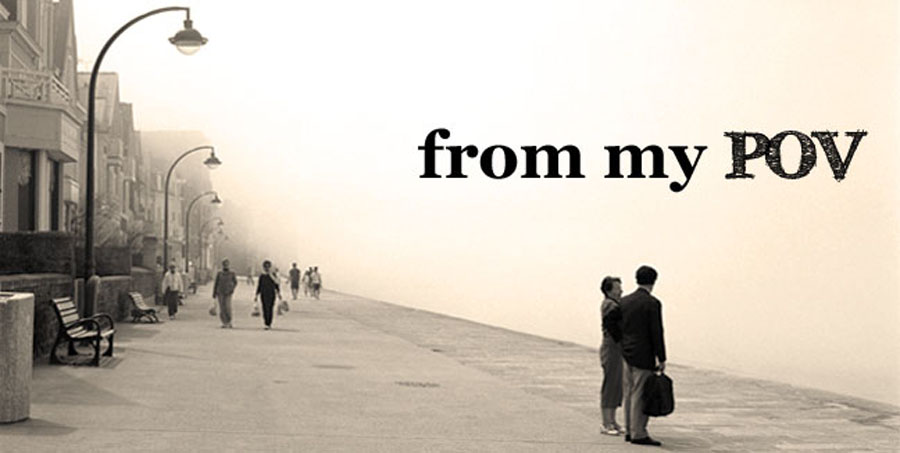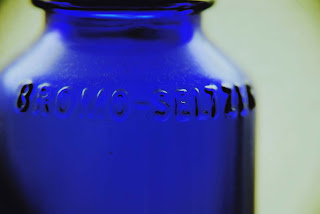
So I printed my AFI ticket receipt for the
Black Swan gala screening and reported to the box office within 90 minutes before the screening as instructed. The line to pick up tickets was really long, but all seemed well until someone with an AFI badge came over and told us if we had internet reservations we had to line up across the street. We moved across the street and lined up where the rush line was last year for the gala of
The Imaginarium of Doctor Parnassus. A minor setback, but we thought all was well. An hour and a half later, we learned it was not. The AFI sent their volunteers out to disband the rush line and 10 minutes later to tell those of us with internet "tickets" that we weren't getting in. The story could end here, and there might be no review. Luckily, however, let's just say I know a ninja. We ended up watching the film from the reserved section of the overflow theater, which actually wasn't even full, and the seats were really comfy. Thanks AFI. Needless to say, I retract all I said about getting free tickets to AFI events. They are obviously not really committed to making film a "community event," as they claim they are. Maybe for the crappy films, when they are trying desperately to fill the theaters, but certainly not for the "galas." Anyway, enough venting.

So there is one thing I should mention first: I missed about the first five minutes of the film, despite this, I think I can still write an informed review. Still, it feels difficult to start because I am not sure how much I can say without ruining the film. In the past I’ve been accused of saying too much. As a guideline, I will only discuss plot points that are in the trailer, so if you do not wish to watch the trailer or know anything about the film, stop reading. In my earlier description of the film, I said that the trailer left it unclear as to the genre of the film, however, I am going to classify the film as a psychological thriller. Similar to Aronofsky’s
The Wrestler,
Black Swan is a study of the psyche of an athlete/performer whose exacting and difficult chosen profession takes it’s toll both physically and mentally. Such a film depends entirely upon the lead actor to sell the story, and similar to the moving performance delivered by Mickey Rourke, Natalie Portman as Nina Sayers makes the film. The supporting cast are excellent, and complement her exceedingly well, but the weight of the film rests on her shoulders.

Nina Sayers is a young ballerina in a prestigious New York ballet company. Seeking recognition and advancement, she longs for the lead role in the company’s opening ballet
Swan Lake. Choreographer Thomas decides to give her the opportunity and attempts to mold her into the swan, white and black. The story is complicated by the passionate and wild Lily, a new addition to the company, whose very personality at once threatens and attracts Nina. As Nina attempts to perfect the role, the stress of conflicting and damaging influences in her life begin to grate upon her. Her anxiety and paranoia begin to consume her, though her dancing is still as technically perfect as it ever was. Nina’s battle with herself is the epic focal point of the film and Portman mesmerizes.

It’s unclear to what extent Aronofsky is responsible for the performance of Portman, not having observed the filming process, but it seems that everything about the film comes second to her. I have read that Portman and Aronofsky had been discussing the project for a very long time, so I think the cultivation of that relationship is his greatest triumph in the film. It is beautifully shot, with an appropriately dark color scheme, and the beautiful strains of Tchaikovsky’s Swan Lake carry the film musically, but something feels like it’s missing. I have not been able to put my finger on it, even days later, but when people ask me if it’s a good film, I find myself hesitating. One thing that surprised me about the film, were the horror film gimmicks employed by Aronofsky: cheap thrills provided by startling images and things that go bump in the night. At the time it seemed unnecessary, but looking back, I think it helped to add to the darkness that descends upon Nina. I think my main complaint is the weight of her anxiety is too much for the seductiveness required to truly make the film transcendent. It is anaphrodisiastic. This could simply be personal preference, but tending towards a high level of anxiety myself, to see it enacted so well on screen evoked a sympathetic response in me, leaving me feeling guarded and unreceptive. At times the film should have elated; it should have taken us on an emotional roller coaster ride, but I think it fell a little short.
Despite my complaints, the film is certainly one of the best of the year, and if you like any element of the film: Natalie Portman, Darren Aronofsky, psychological thrillers, or even ballet, you won’t be disappointed.













